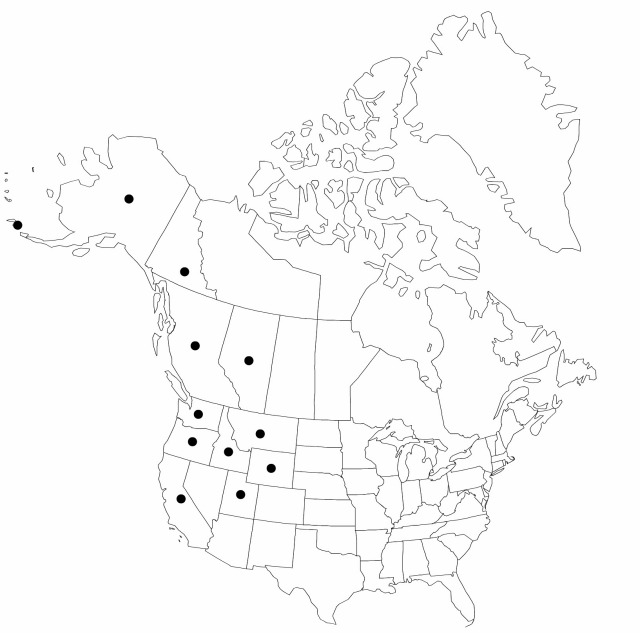Carex spectabilis
Amer. J. Sci. Arts 29: 248, plate X, fig. 76. 1836.
Culms 25–50 cm. Leaves basal and cauline; proximal leaves reduced to sheaths; distal leaves with blades 2–5 mm wide. Inflorescences: spikes separate, oblong or elongate, 8–20 × 3.5–5 mm; lateral spikes 2–4 (–9); proximal spikes spreading or pendent, long-pedunculate; distal spikes approximate, erect or spreading, short-pedunculate. Pistillate scales brown or black, midvein prominent, lighter colored than body, conspicuous, lanceolate, shorter or longer than and as broad as perigynia, apex acute or mucronate. Perigynia yellow-green, green, or purple-black, veined or veinless, ovate, 3.5–5 × 1.75–2 mm, smooth; beak 0.4–0.5 mm, entire or deeply bidentate, smooth.
Phenology: Fruiting Jul–Sep.
Habitat: Moist subalpine and alpine meadows
Elevation: 300–3500 m
Distribution

Alta., B.C., Yukon, Alaska, Calif., Idaho, Mont., Oreg., Utah, Wash., Wyo.
Discussion
Some specimens of Carex spectabilis in Glacier County, Montana, show transitions to C. paysonis.
Selected References
None.
Lower Taxa
"shortened" is not a number.
